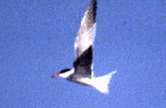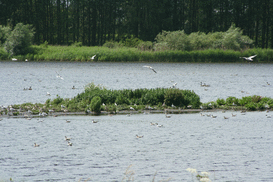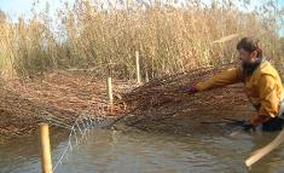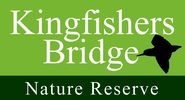The Lake

The 25 acre lake provides essential open water, used by large numbers of wildfowl for feeding, roosting and breeding. The islands are good for nesting on while the variable water depths provide good feeding areas for dabbling and diving ducks. The islands are also used by breeding waders and Common Tern.
Water Control

The lake holds water all year round, however water levels are raised through the winter covering some of the islands. These are exposed during the spring when water levels are dropped. This is important as Kingfishers Bridge is home to a large breeding colony of Black Headed Gulls. Common Terns arrive on the mere much later than the gulls and the exposure of islands, clear of gull nests, provides the Terns with available breeding territories.
Fish Stocks

A good fish population is essential to attract those species that like to eat fish! The lake and reedbed are favoured feeding sites for Bitterns and potentially will attract otters. Stocked with rudd, perch and eels the plan is to provide favoured species throughout the year. Rudd breed profusely in suitable conditions and (with eels) are the main prey species for bitterns in summer. In winter eels and rudd are inactive, rudd keep low in deep pools and eels spend lots of time in the mud. Perch keep active in winter and venture to the shallows where they are thought to make up a significant part of the winter diet. There is one particular problem with this - cormorants! If they get a chance cormorants will also help themselves to the fish stocks, and in some cases can rapidly reduce fish stocks to very low levels.
The fish refugia at Kingfishers Bridge are designed to offer fish somewhere safe to go away from cormorants. They are made from cut willow stems either held by a wire fence or tied together with rope and weighted with concrete blocks. By providing protective habitat which they favour the fish will be less vulnerable to predation.
The fish refugia at Kingfishers Bridge are designed to offer fish somewhere safe to go away from cormorants. They are made from cut willow stems either held by a wire fence or tied together with rope and weighted with concrete blocks. By providing protective habitat which they favour the fish will be less vulnerable to predation.
